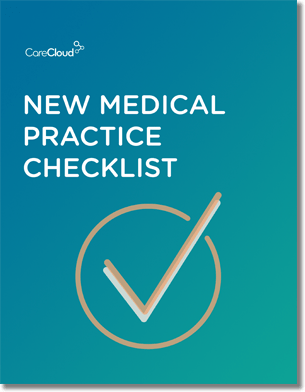All trends indicate healthcare is converting to a pay-for-performance model of reimbursement. Is your practice ready?
Now more than ever, it’s important to account for cost issues, quality gaps, and any other missteps resulting from shifting to a new EHR or other systems. This is where analytics tools play a part.
The seventh installment of Power Your Practice’s Actionable Analytics series is here to help. Whether you’re worried about government mandates or just want to improve the overall quality of care, clinical analytics has become essential to maintaining your practice’s wellbeing.
Manage Patient Populations
As healthcare providers adapt to the changing requirements of 2010’s health reform law — and some transition into accountable care organizations (ACO) — it becomes increasingly important to utilize actionable analytics to help identify cost issues, quality gaps, and inefficiencies that can arise during the shift to the new systems. ACOs require careful reporting and sharing of data between entities to deliver the most efficient and effective patient care possible.
The healthcare industry is shifting to a pay-for-performance model of healthcare reimbursement that focuses on quality of care, as opposed to quantity of care. In this new model, utilizing analytics is essential for monitoring patient care data and enhancing efficiency.
The KLAS report previously cited found that many providers were already utilizing business intelligence tools in their practices to help achieve Meaningful Use. Providers are using analytics to track patient data trends and patterns around specific ailments and diseases and measure those numbers against physician performance and usage rate to get a clearer picture of how efficiently resources are being used and patients are being treated.
Actionable analytics tools give providers the ability to group patient populations by conditions, lab results, medications, procedures, demographic information and so on, for a more comprehensive understanding of care management and patient outcomes.
The ability to reference patient groups against condition and treatment data will allow providers to assess clinical performance, practice evidence-based medicine, comply with government mandates, and improve the overall quality of health care.
Benefits of clinical analytics include:
- Compare and contrast treatments for a single disease to identify the more effective plan.
- Identify patients on a specific medication that was recently recalled.
- Identify patients for which screenings and tests are not up to date.
- Identify “interruptions of care,” such as patients missing tests or follow-up appointments, patients failing to have their medications adjusted based on a change in health, etc.
- Drive outreach to patients with specific conditions or demographic profiles to maintain and manage wellness.
- Drive improvement of care by providing clinicians with specific goals for the patients they see during the day, and reporting on results.
- Improve upon specific quality measure efforts like PQRI, HEDIS, etc.
The ability to collaborate, manage and track large patient populations by utilizing actionable analytics will ultimately deliver greater benefits for patients by reducing errors, increasing the speed of treatment, and producing better outcomes.
Check back next week to learn how to use different “patient types” to give your practice insight into histories and provide more customized treatment plans.

Do you know what you need when setting up a new medical practice?



